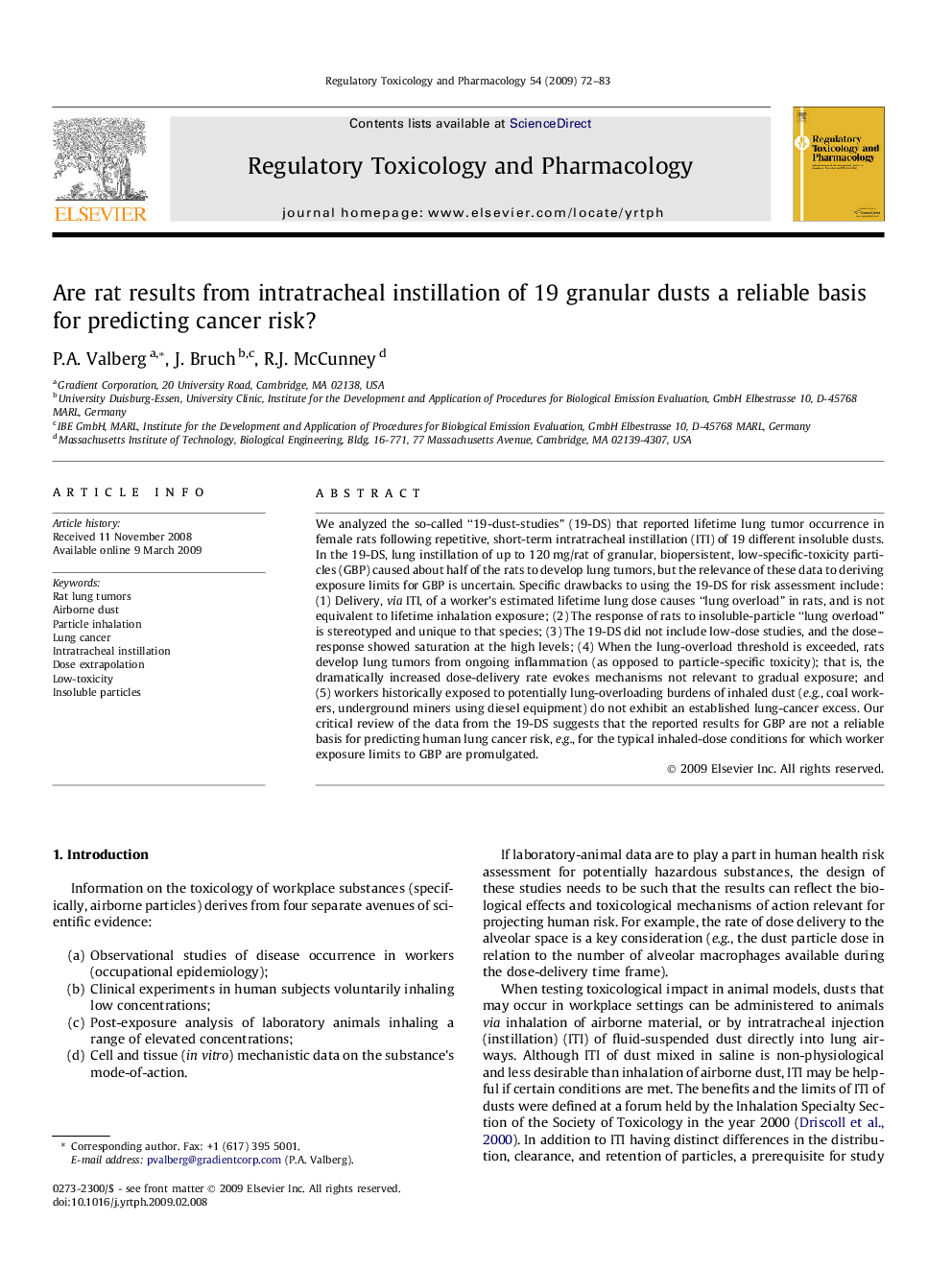| Article ID | Journal | Published Year | Pages | File Type |
|---|---|---|---|---|
| 2592619 | Regulatory Toxicology and Pharmacology | 2009 | 12 Pages |
We analyzed the so-called “19-dust-studies” (19-DS) that reported lifetime lung tumor occurrence in female rats following repetitive, short-term intratracheal instillation (ITI) of 19 different insoluble dusts. In the 19-DS, lung instillation of up to 120 mg/rat of granular, biopersistent, low-specific-toxicity particles (GBP) caused about half of the rats to develop lung tumors, but the relevance of these data to deriving exposure limits for GBP is uncertain. Specific drawbacks to using the 19-DS for risk assessment include: (1) Delivery, via ITI, of a worker’s estimated lifetime lung dose causes “lung overload” in rats, and is not equivalent to lifetime inhalation exposure; (2) The response of rats to insoluble-particle “lung overload” is stereotyped and unique to that species; (3) The 19-DS did not include low-dose studies, and the dose–response showed saturation at the high levels; (4) When the lung-overload threshold is exceeded, rats develop lung tumors from ongoing inflammation (as opposed to particle-specific toxicity); that is, the dramatically increased dose-delivery rate evokes mechanisms not relevant to gradual exposure; and (5) workers historically exposed to potentially lung-overloading burdens of inhaled dust (e.g., coal workers, underground miners using diesel equipment) do not exhibit an established lung-cancer excess. Our critical review of the data from the 19-DS suggests that the reported results for GBP are not a reliable basis for predicting human lung cancer risk, e.g., for the typical inhaled-dose conditions for which worker exposure limits to GBP are promulgated.
